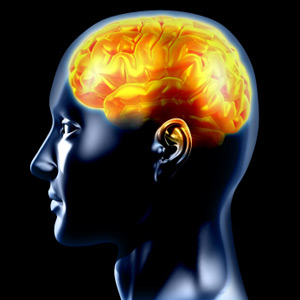
LOS ANGELES — Fourteen-year-olds who were frequent
video gamers had more gray matter in the rewards center of the brain
than peers who didn’t play video games as much — suggesting that gaming
may be correlated to changes in the brain, much as addictions are.
European
scientists reported the discovery Tuesday in the journal Translational
Psychiatry. Psychologist Simone Kuhn of Ghent University in Belgium and
colleagues recruited 154 healthy 14-year-olds in Berlin and divided them
into two groups. Twenty-four girls and 52 boys were frequent gamers who
played at least nine hours of video games each week. Fifty-eight girls
and 20 boys were infrequent gamers, who played less than nine hours a
week.
Structural magnetic resonance imaging (MRI)
showed differences in the test subjects’ brains. Frequent gamers had
more gray matter in a portion of the brain known as the left ventral
striatum, which affects the interplay of emotions and behavior. Previous
research identified striatal function as a “core candidate promoting
addictive behavior,” the authors wrote.
Using
functional magnetic resonance imaging (fMRI), the team also observed
changes in the teens’ brains as they participated in a task that
simulated anticipating and receiving a reward. They found that frequent
gamers had greater brain activity when they were given feedback that
they were losing. This is similar to a response seen in addicted
gamblers, the authors noted, who have increased levels of the brain
chemical dopamine in the ventral striatum when they are losing money.
The
authors wrote that their study is the first to correlate changes in
brain structures with video gaming. They couldn’t determine if the
frequent gamers’ brains grew larger as a result of playing video games
or if those kids were attracted to gaming because that part of their
brain was enlarged in the first place; scientists will need to measure
the effects of video gaming on structures in the brain over time to
figure that out.
But either way, discovering the
link between brain structure and video games could help researchers
understand the role of the brain in addictive behaviors, they wrote.
“If
the striatal differences observed in the current study are indeed an
effect of gaming, video gaming might post an interesting option to
explore structural changes in addiction in future studies in the absence
of any neurotoxic substances,” they noted.
___
©2011 the Los Angeles Times
Visit the Los Angeles Times at www.latimes.com
Distributed by MCT Information Services














